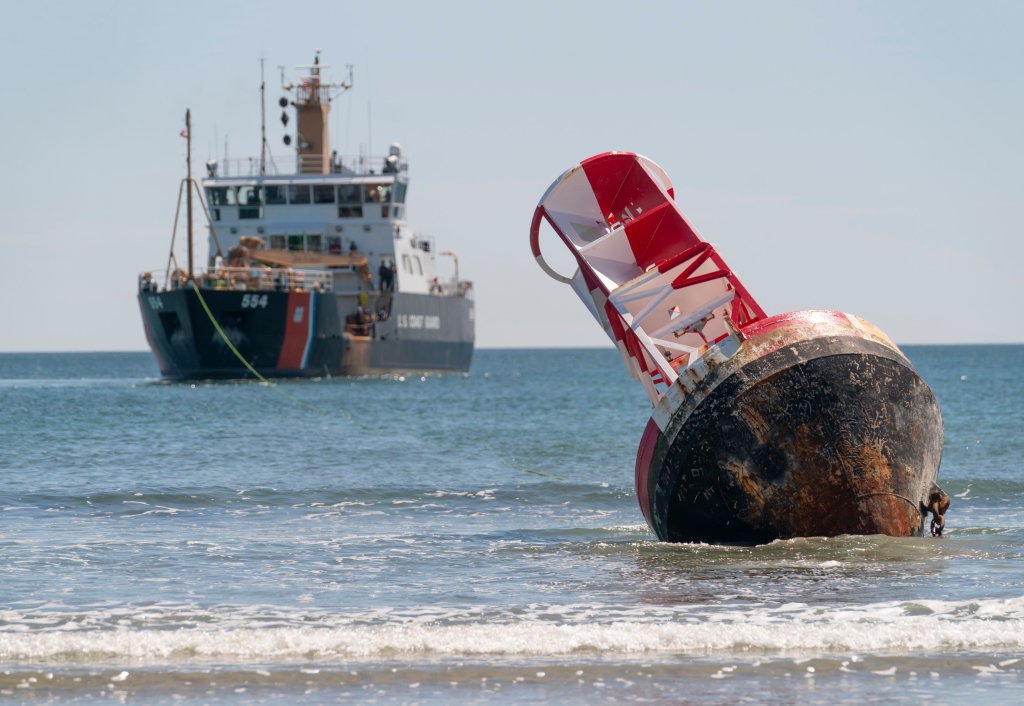Sign up for the Today newsletter
Get everything you need to know to start your day, delivered right to your inbox every morning.

The BDN Editorial Board operates independently from the newsroom, and does not set policies or contribute to reporting or editing articles elsewhere in the newspaper or on bangordailynews.com.
Do you favor a $10 million bond issue to restore historic buildings owned by governmental and nonprofit organizations, with funds being issued contingent on a 25 percent local match requirement from either private or nonprofit sources?
Treasured pieces of Maine’s history are on the ballot this election. And no, we’re not referring to the debate around replacing Maine’s flag.
Question 3 would approve a $10 million bond to help restore historic government and nonprofit buildings across the state. The question requires a 25 percent local match from either private or nonprofit sources.
These are structures and sites like old meeting houses, town halls, public libraries, museums, grange buildings, old forts, homesteads, and other sites that might otherwise fade into memory without restoration efforts.
The government entities or nonprofits responsible for these buildings might not have the resources available to prioritize this needed work. Some funding through the Maine Historic Preservation Commission and other organizations is meant to aid these valuable projects, which help ensure that Maine’s history remains an active part of our future. Though survey results from the people doing this work indicate that consistent state funding that matches the statewide need has been elusive.
Passing Question 3 would help address this, even a one-time infusion of $10 million represents just part of the statewide need. A previous bond of this type was passed back in 1985, when voters approved $2 million.
This newest iteration was proposed by two Republican state lawmakers, Rep. Sawin Millett and Sen. Rick Bennett. Its original amount of $25 million was paired back when the bond question was reviewed and approved by the Legislature.
Though the amount matches neither the original proposal nor the existing preservation needs across the state, it remains a sensible down payment to protect parts of Maine’s history. The Maine Historic Preservation will oversee the award of funding to various projects with this funding, as it has before, in a process that can safeguard Maine’s past while also supporting current community cohesion and economic activity.
“Studies show that investment in historic preservation supports small business and good paying jobs, improves property values, keeps money circulating in local economies, and catalyzes additional investment,” said Tara Kelly, executive director of the nonprofit Maine Preservation, and Sarah Hansen, the executive director of Greater Portland Landmarks, in testimony before the Legislature last year. “The rehabilitation of historic buildings can be labor intensive, creating high-paying jobs. In a soon-to-be-finalized economic impact analysis of historic preservation in Portland, it is estimated that these projects create 218 direct jobs and an additional 217 indirect and induced jobs every year.”
While we would prefer to see increased and consistent support for these preservation efforts built into the state budget rather than be subject to bonding — and the interest that comes with it — the unfortunate fact remains that such a consistent funding source has yet to materialize. In its absence, this bond is a prudent if insufficient public investment. The longer some of these projects wait for support, the more likely that these structures and sites degrade beyond repair.
Julia Gray, the executive director of the Wilson Museum in Castine, offered strong rationale for supporting this bond question in legislative testimony last year.
“Maine’s historic buildings are an irreplaceable part of our civic infrastructure,” Gray said. “They are often part of a community’s identity, a highly visible symbol of local history, places of memory that span generations.”
We agree, and we hope Maine voters will too. Question 3 deserves a yes vote.


Local News
A 26-year-old fisherman died Friday after he and another crew member were injured in an accident aboard their fishing boat off the North Shore, officials said.
Just before 4 p.m., the US Coast Guard responded to a distress call reporting that a snapped rope had struck two crew members on the 25 TO LIFE, a fishing vessel, according to spokesperson and Petty Officer 2nd Class Diolanda Caballero. The boat was located about 25 miles east of Nahant.
One of the crew members suffered a concussion and possible broken ribs, and the other, later identified as Jaxson Marston, had a broken neck and was “intermittently unresponsive,” Caballero said in a statement.
The Coast Guard launched response boats and diverted a helicopter to aid in the recovery, according to officials. Shortly after 5 p.m., one of the response boats reached the 25 TO LIFE and delivered the two crew members to a Gloucester pier.
The crew members were transferred to emergency medical services and taken to Beverly Hospital, where Marston was pronounced dead on arrival, officials said.
Marston was originally from Addison, Maine, according to the Bangor Daily News. Josh Stubbs, a member of the town’s select board, said on Facebook that he loved Marston “like a brother.”
“I have had trouble all day trying to find the right words to say,” Stubbs wrote. “I have known you for a long time. But the last years we have been close. I don’t know what to do.”
Cape Ann Lobstermen, a fish market in Gloucester, started a fundraiser to provide for Marston’s family, scallop fisherman Jesse Roche posted on Facebook. For the fundraiser, fishermen are encouraged to donate a bag of scallops out of their final catch, with the proceeds going to the family.
Maine State Representative Tiffany Strout offered her condolences on Facebook.
“Jaxson, only 26 years old, a husband, a dad, hard worker, passionate hunter and a freind to many was doing what he had done many times before, just trying to earn an honest living to support his family,” she wrote. “Now his family can use all the support as they try to move forward with the loss of their loved one.”
Strout also encouraged community members to keep the other crew member and his family in their thoughts, writing that he “needs all the support for him and his family as he tries to recover from his injuries.”
“A reminder that life is short, things can change in an instant and sometime accidents just happen, even with the most caution and readiness,” Strout wrote. “Please keep the fishermen’s family’s in your thoughts and give your family and friends big hugs as I am sending big hugs to the families.”
Get everything you need to know to start your day, delivered right to your inbox every morning.

I read Peter Ryner’s April 12 op-ed, “Zoning won’t solve Maine’s housing crisis — and zoning didn’t create it,” with interest. His central assertion, “Zoning … is neither the source nor the solution to Maine’s housing problems” is incorrect and not supported by his argument. Many cities, towns and villages in Maine could not be rebuilt today. Most buildings in these places are “non-conforming,” i.e., they don’t meet current zoning regulations.
In many instances, municipalities have applied suburban building standards to their traditional town centers. Requiring a half-acre lot in the center of a town or village doesn’t just prevent the “warehousing” of people, as Mr. Ryner frets, it prevents the building of anything at all. Not only are most towns not adding housing to their historic centers but, as housing is lost, it’s not being replaced. This is bad and we should address the problem: outdated zoning regulations.
Maine’s recent law permitting accessory dwelling units statewide was a good step in the right direction. Still, we must do better. Allowing, and encouraging, the “thickening up” of the historic centers of our cities and towns would be a great place to start. Eliminating minimum lot sizes, shifting to a focus on form rather than use or density and, perhaps, eliminating zoning requirements altogether around transit hubs would all be good next steps.
Zoning reform is not a panacea, however any meaningful expansion of housing opportunity will require at the hard look at the constraints zoning imposes.
Brian Banton
Topsham


A beached buoy is pulled off Wells Beach by the U.S. Coast Guard Cutter Marcus Hanna on April 22, 2024. Carl D. Walsh/Portland Press Herald
The U.S. Coast Guard has proposed the removal of over 100 navigation aids in Maine waters, along with many more along the East Coast.
In a notice posted earlier this month, the Coast Guard said the removals are intended to modernize and rightsize the setup of buoys, most of which were deployed before modern GPS systems.
“This effort will result in the most sustainable navigation risk reduction to support and complement modern mariners, today’s much larger ships, ECS system availability and requirements, and powerful smartphone navigation subscription apps affordably accessible to virtually all waterway users,” the Coast Guard wrote.
Locations listed for buoy removal include Portland, Camden, Cape Neddick, Castine and Wells harbors, as well as Penobscot Bay and the Damariscotta, Penobscot, Saco and Scarborough rivers.
The buoys serve various purposes, such as marking harbor entrances and coastal hazards.
Many waterway users have objected to the proposed removals online on sailing forums, yacht club Facebook groups and Reddit. An unofficial interactive map with the approximate locations of the buoys slated for removal has been published online as well.
The Coast Guard is accepting public comments and feedback on its proposal via email at DPWPublicComments@uscg.mil until June 13.
Harvard would be smart to follow Hillsdale’s playbook. Trump should avoid Biden’s. | Opinion


Video: Hegseth Attacks the Media Amid New Signal Controversy


Porto's Bakery moving forward in Downtown Disney, replacing Earl of Sandwich


New Poetry Books That Lean Into Calm and Joy Amid Life’s Chaos


Supreme Court blocks new deportations of Venezuelans in Texas under 18th century Alien Enemies Act


Maps: Where Do Federal Employees Work in America?


Pope Francis and US presidents: A look back at his legacy with the nation's leaders


New Zealand’s minor gov’t party pushes to define women by biological sex